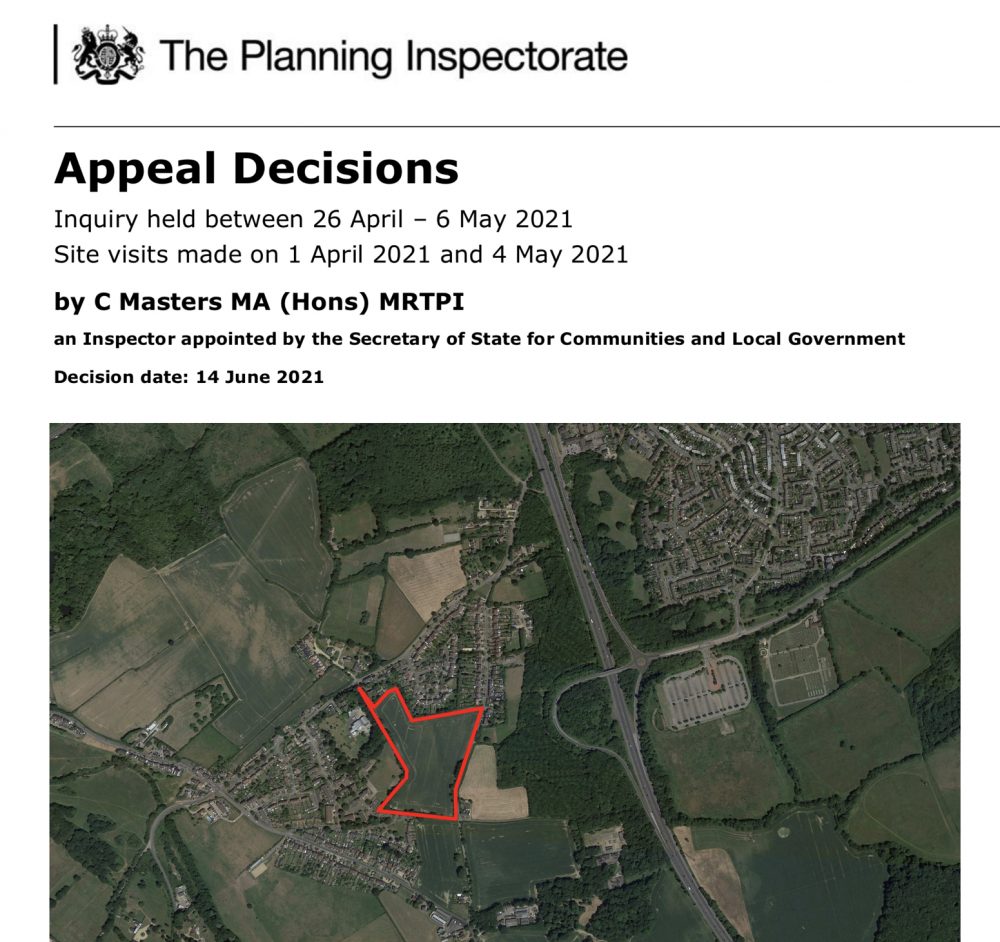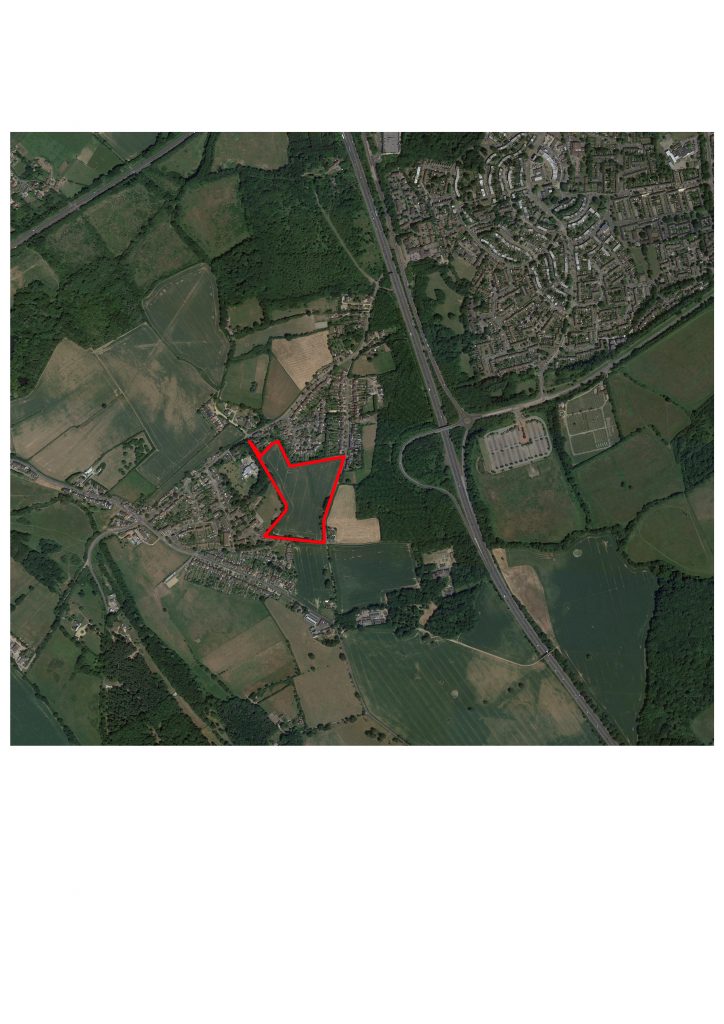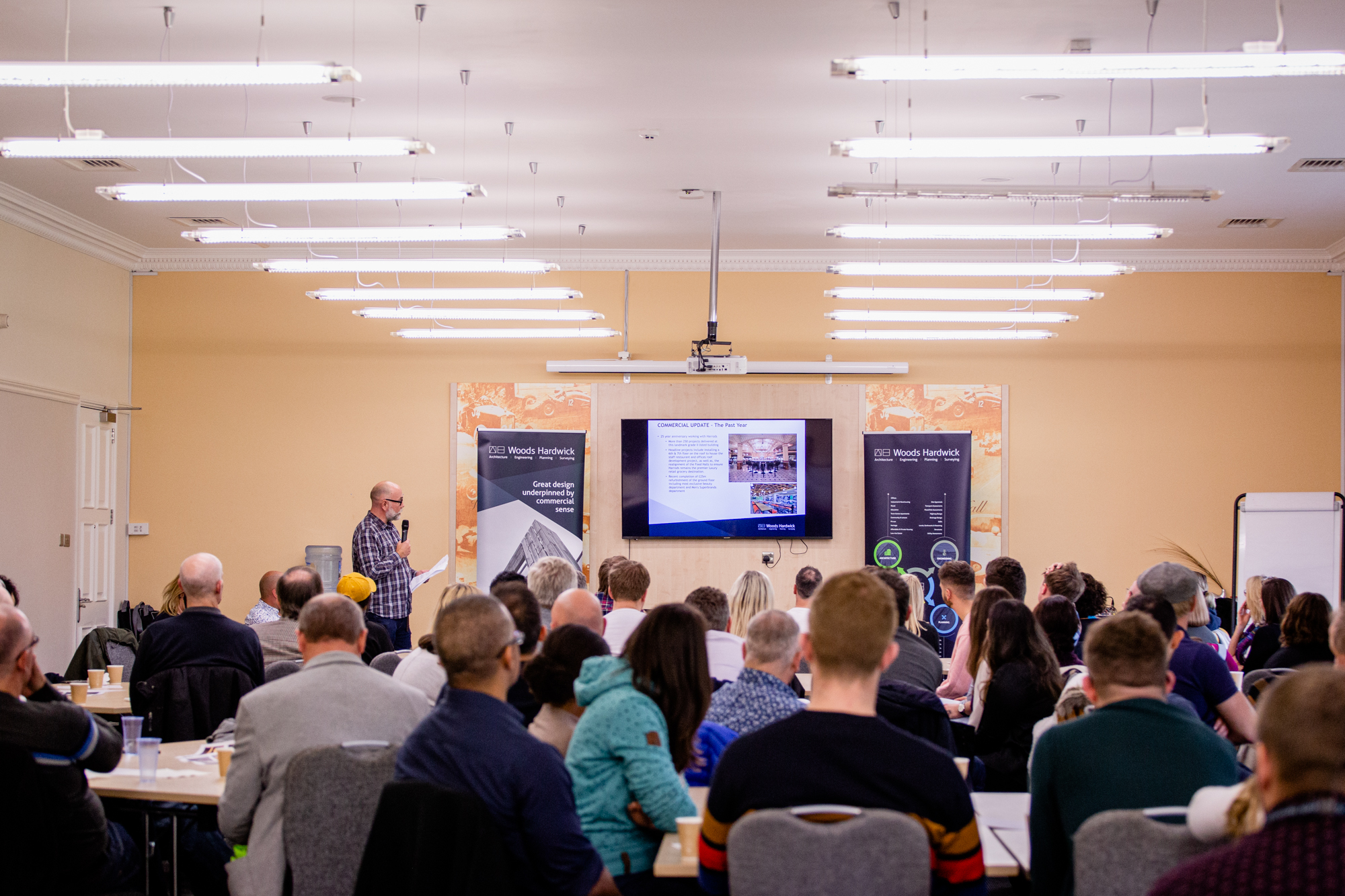
Planning appeal success in the Green Belt – landmark decision!
We are celebrating the news that an Inspector has granted planning permission for our planning team’s appeals for a cross-boundary scheme of up to 100 new homes on an unallocated greenfield site in the Green Belt in St Albans District and Welwyn Hatfield Borough, for client, Canton Ltd.
This is an extremely significant inquiry decision, and one that Christopher Young QC of No. 5 Chambers, who provided initial advice on the strategy for the scheme, is hailing as ‘probably the most important planning appeal decision you’ll ever read’ and ‘an absolute game changer’.
Why so significant?
Not only is the site 100% greenfield, unlike other successful appeals for such sites in the Green Belt, it is not, and never has been, a draft allocation in an emerging local plan. Nor is there a strategic planning context in the development plan identifying the general location for growth. The site also does not involve an enabling development, like the Seashells Trust case in Stockport.
It is therefore the first appeal decision of this kind and is worth reading in full.
Very Special Circumstances
Given the nature of the site, crucial to winning the appeal was demonstrating that ‘very special circumstances’ exist, clearly outweighing harm to the Green Belt by reason of inappropriateness and any other harm, as required by the NPPF.
Our Planning Director, Russell Gray, gave evidence on both the very special circumstances balance and the impact of the development on the site’s contribution to Green Belt purposes.
Conclusions on harm to the Green Belt
Beyond the definitional harm to the Green Belt that the NPPF prescribes is given to all “inappropriate development” the Inspector inevitably found harm to the openness of the Green Belt, given the proposal involves development of up to 100 houses on an agricultural field, and that this should carry substantial weight.
However, of real interest was her considerations on harm to the purposes of including land in the Green Belt. It was common ground between the main parties that only purposes c) safeguarding the countryside from encroachment and e) to assist in urban regeneration, by encouraging the recycling of derelict and other urban land, were applicable. In respect of the former, at paragraph 26 of the Decision Letter the Inspector states:
I have already set out in my assessment of character and appearance above that the appeal site has an urban edge/edge of settlement character. I have made a clear distinction between the appeal site and its separation from the countryside beyond to the south and east of the appeal site. In this way, the appeal site is influenced by the surrounding residential development. As a result of these locational characteristics and influences, the consequences of the development at the appeal site would mean that the proposals would have only a localised effect on the Green Belt. The broad thrust of, function and purpose of the Green Belt in this location would remain and there would be no significant encroachment into the countryside. I therefore conclude that the appeal proposal would not result in harm in terms of the encroachment of the Green Belt in this location. This is a neutral factor which weighs neither in favour nor against the appeal proposals. (Emphasis added)
In respect of purpose e), the Inspector found no substantive evidence to suggest that development of the site would disincentivise redevelopment of existing urban sites, supporting Russell’s position on this matter to the inquiry, and, again found this to be a neutral factor, weighing neither in favour of, nor against the scheme.
Conclusions on other harm
While the application to WHBC had been refused for eight reasons, with SADC’s putative reasons essentially the same, four of these had been dealt with by the time of the inquiry; those relating to biodiversity, archaeology, highways (for which Woods Hardwick’s engineers acted for Canton Ltd) and S106 Agreement. Round table sessions were still held on the latter two matters, with Woods Hardwick’s Civil Engineering Director, John Freeman, acting for Canton Ltd on the former.
In respect of the other matters, the Inspector concluded that the proposals would not result in any harm to the setting or significance of the heritage asset – the Grade II listed 68 Roestock Lane. Following a roundtable session at which Russell Gray and John Freeman both gave evidence for the appellant, illustrating the benefit of WH’s cross-discipline approach, she concluded that the appeal site would represent a sustainable location for new residential development. On impact on character and appearance, the Inspector found only limited harm and gave this moderate weight.
Considerations in support of the appeal proposal
On the supporting side of the very special circumstances balance, the Inspector endorsed the key conclusions made by Russell in his evidence that, in light of the chronic shortfalls in supply, very substantial weight should be given to both the market and affordable housing elements of the scheme, and substantial weight to provision of up to 10 self-build and custom house-building plots.
On affordable housing, expert evidence, which was not contested by the LPAs, was provided by James Stacey of Tetlow King Planning, on the extremely acute situation in respect of the shortfalls and affordability issues in both LPA areas. This demonstrated the position taken on the weight to be given to the provision of 45% affordable (up to 45 units) as part of the scheme, which is above the adopted policy requirement of both WHBC and SADC. At paragraph 54 of the decision letter, the Inspector concluded:
The persistent under-delivery of affordable housing in both local authority areas presents a critical situation. Taking into account the extremely acute affordable housing position in both SADC and WHBC, I attach very substantial weight to the delivery of up to 45 affordable homes in this location in favour of the proposals.
Similarly, Andy Moger of Tetlow King Planning, provided evidence, again uncontested, that the statutory duty to provide for base period self-build and custom house-building plots had not been met by a significant margin, justifying the weight to be given to the plots proposed in the planning balance. At paragraph 52 of the decision letter the Inspector concluded:
In common with both market housing and affordable housing, the situation in the context of provision of sites and past completions is a particularly poor one. To conclude, I am of the view that the provision of 10 self build service plots at the appeal site will make a positive contribution to the supply of self build plots in both local planning authority areas. I am attached substantial weight to this element of housing supply.
For more information on the affordable housing and self-build arguments made, please see http://www.tetlow-king.co.uk/affordable-housing-and-self-build-and-custom-housebuilding-help-to-demonstrate-very-special-circumstances-in-appeal-success/
In respect of market housing, it was common ground that neither SADC or WHBC can demonstrate a five year supply of deliverable housing, with the Inspector describing the position as a “bleak one” and the shortfalls in both areas “considerable and significant” (See DL paragraph 48) even on the respective LPAs’ supply positions. A report by Emery Planning for the Appellant demonstrate that situation is in fact worse in both LPA areas, albeit the parties agreed that difference between the parties’ positions was not material to the appeal.
In concluding on the weight to be given to the contribution towards market housing need, the Inspector also took into account the substantive evidence presented for the Appellant on the failures in plan-making in this part of Hertfordshire (SADC has the oldest plan in the country, adopted in 1994, with WHBC’s adopted in 2005) and the lack of a plan-led solution on the horizon in either area, to address the housing need issues and shortfalls. At paragraph 49, she states:
There is therefore no dispute that given the existing position in both local authority areas, the delivery of housing represents a benefit. Even if the site is not developed within the timeframe envisaged by the appellant, and I can see no compelling reason this would not be achieved, it would nevertheless, when delivered, positively boost the supply within both local authority areas. From the evidence presented in relation to the emerging planning policy position for both authorities, this is not a position which I would envisage there would be any marked improvement on in the short to medium term. I afford very substantial weight to the provision of market housing which would make a positive contribution to the supply of market housing in both local authority areas.
Conclusions
This was, then, a straight housing benefit case, with the proposal meeting three distinctly different aspects of housing, for which there is substantial need in the area, on a good site, in a location where plan-making has been, to put it mildly, problematic.
In concluding that the very special circumstances balance is carried, Inspector Masters resolved that:
“78. The proposals would cause harm by reason of inappropriateness and harm to openness. Both of these attract substantial weight. I have also attached moderate weight to harm to the character and appearance of the area. However, these appeals involve two local authority areas, both of which have acute housing delivery shortages and acute affordable housing need. The proposals would make a contribution towards addressing these needs in the form of market, self build and affordable housing in both WHBC and SADC. I have attached very substantial weight to the provision of both market housing and affordable housing. I have attached substantial weight to the provision of self build housing. These factors when considered collectively demonstrate that very special circumstances exist.
79. I conclude that in the case of these appeals, I find that the other considerations in this case clearly outweigh the harm that I have identified. Looking at the case as a whole, very special circumstances do exist to justify inappropriate development in the Green Belt. My findings on the other matters before me do not lead me to a different conclusion. As a result, I therefore conclude that the proposals would comply with both the Framework and the development plans taken as a whole. For the reasons given above, and having considered all other matters raised, the appeals are allowed.”
This result was a tremendous team effort (full team details provided below). Expert Counsel was provided by the brilliant Zack Simons of Landmark Chambers, whose own summary can be read HERE.
View the documents here: Colney Heath Appeal Decision
To discuss this project in more detail or if you require planning advice for your scheme, get in touch.
Russell Gray – r.gray@woodshardwick.com
Team:
Woods Hardwick – Planning
Russell Gray (Planning Witness)
Tal Nikan
Kerry Gow
Woods Hardwick – Engineering
John Freeman (Highways Witness)
George Beevor-Reid
Project Team
Zack Simons QC, Landmark Chambers
Andrew Crutchley, The Environmental Dimension Partnership (Heritage Witness)
Gary Holliday, FPCR (Landscape, Character & Appearance Witness)
James Stacey, Tetlow King Planning (Affordable Housing Witness)
Andy Moger, Tetlow King Planning (Self-build and Custom House-building Witness)
Annie Hamilton Gingell, Tetlow King Planning
Kurt Goodman, FPCR (Ecology)
Ben Pycroft, Emery Planning Partnership (Five Year Housing Land Supply)
Simon Ricketts, Town Legal LLP (S106)
Paul Arnett (S106)




